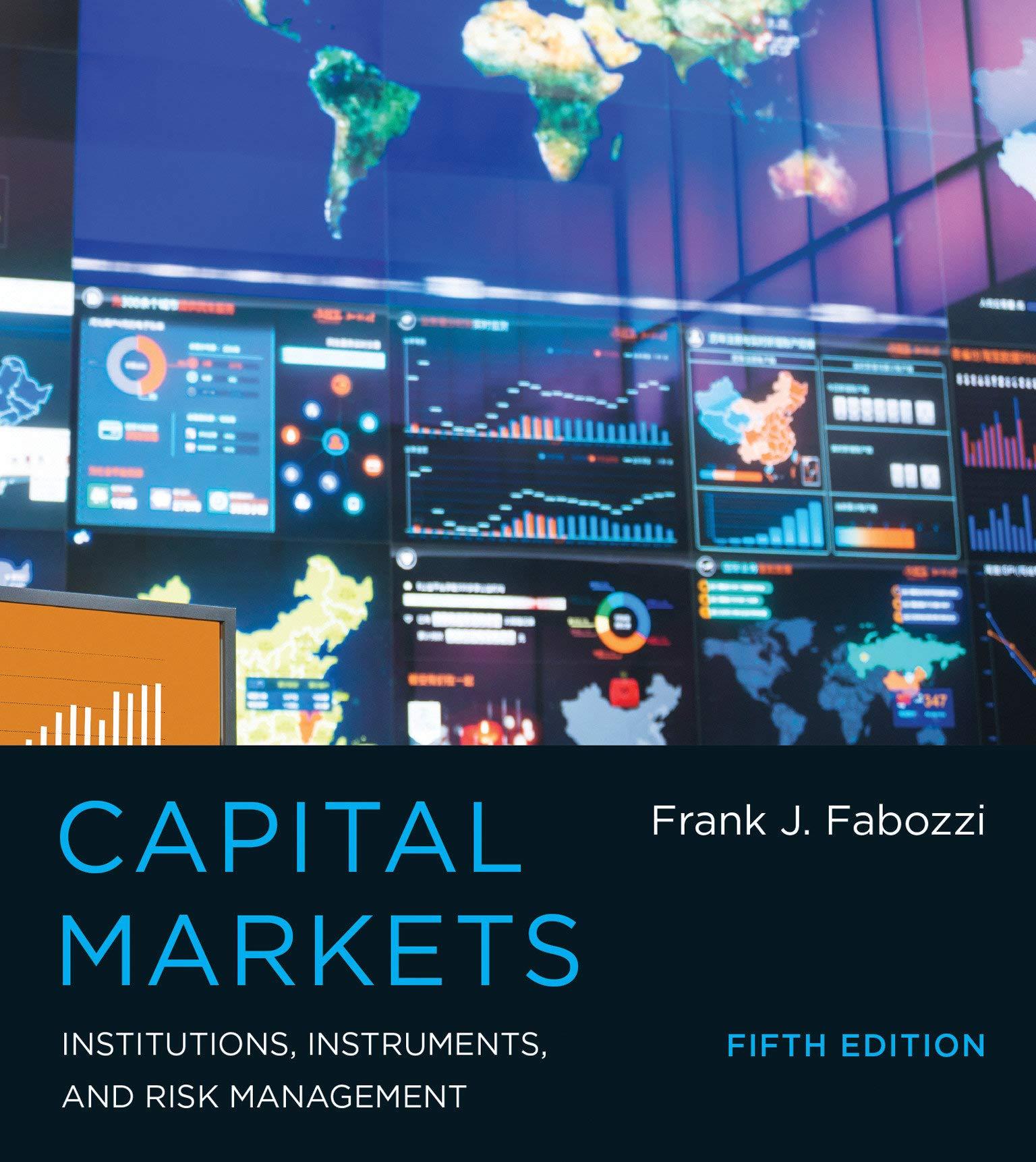

9. For this question, we will use the following tabulated monthly return data (similar to what you worked for #12 in your first assignment): A B C D E F G 1 2 3 Ave1 4 Ave2 5 SD1 6 SD2 7 Skew1 8 Skew2 9 Kurt1 10 Kurt2 Low 1.0658 0.8986 8.1038 6.8098 1.2889 -0.4087 10.2735 1.9277 Small Medium 1.2361 1.2558 8.2273 5.3825 1.6169 -0.5399 13.5372 3.2174 High 1.5147 1.3624 10.0162 5.5700 2.3286 -0.4504 18.0033 3.8985 Low 0.9225 0.9267 5.7961 4.7012 -0.0257 -0.3251 6.7632 1.9199 Big Medium 0.9272 0.9908 6.6705 4.3725 1.6694 -0.4093 17.4930 2.3740 High 1.2764 1.0887 8.7584 4.9146 1.7480 -0.5204 14.8482 2.7469 All Figures are in Percentages a. Calculate the average monthly return premium on the SMB and HML portfolios in the second period (1971-2018). For example, SMB will be given by [(B4+C4+D4) (E4+F4+G4)]/3. Similarly, HML will be given by [(D4 B4) + (G4 - E4)]/2, i.e., the average of the two differences observed. Convert the monthly premiums to annual rates by using the following formula: P. = (1+Pm)12 1 Note: All the returns in the table above are in percentages. Always perform mathematical operations using numbers in decimal format, in this case, the values divided by 100. b. Recall the 3-factor FF model: E(R)= R,+B, (R,, - R,) +Bswf (sR,-(B-R,)) + Braz (H R, -(L-R,)) = R,+B, (R, - R,) +Bsub (S B) + Bum (H L) State the risk/return relationship above, if the annual risk-free rate is 2% and the return on the market portfolio is 6.5%. c. You are valuing a company using the Gordon Growth Model with constant growth rate of 3%, and the most recent dividend payment of $1 per share. Find the fair market value of the company using the CAPM model, if the stock has a beta of 1.2. d. Using the same company and data as in part (c), compute the fair value of the company, if the SMB beta is -0.2, and the HML beta is 0.7. Contrast your finding to that of part (c). What do you conclude? Can you characterize this company with the data available? 9. For this question, we will use the following tabulated monthly return data (similar to what you worked for #12 in your first assignment): A B C D E F G 1 2 3 Ave1 4 Ave2 5 SD1 6 SD2 7 Skew1 8 Skew2 9 Kurt1 10 Kurt2 Low 1.0658 0.8986 8.1038 6.8098 1.2889 -0.4087 10.2735 1.9277 Small Medium 1.2361 1.2558 8.2273 5.3825 1.6169 -0.5399 13.5372 3.2174 High 1.5147 1.3624 10.0162 5.5700 2.3286 -0.4504 18.0033 3.8985 Low 0.9225 0.9267 5.7961 4.7012 -0.0257 -0.3251 6.7632 1.9199 Big Medium 0.9272 0.9908 6.6705 4.3725 1.6694 -0.4093 17.4930 2.3740 High 1.2764 1.0887 8.7584 4.9146 1.7480 -0.5204 14.8482 2.7469 All Figures are in Percentages a. Calculate the average monthly return premium on the SMB and HML portfolios in the second period (1971-2018). For example, SMB will be given by [(B4+C4+D4) (E4+F4+G4)]/3. Similarly, HML will be given by [(D4 B4) + (G4 - E4)]/2, i.e., the average of the two differences observed. Convert the monthly premiums to annual rates by using the following formula: P. = (1+Pm)12 1 Note: All the returns in the table above are in percentages. Always perform mathematical operations using numbers in decimal format, in this case, the values divided by 100. b. Recall the 3-factor FF model: E(R)= R,+B, (R,, - R,) +Bswf (sR,-(B-R,)) + Braz (H R, -(L-R,)) = R,+B, (R, - R,) +Bsub (S B) + Bum (H L) State the risk/return relationship above, if the annual risk-free rate is 2% and the return on the market portfolio is 6.5%. c. You are valuing a company using the Gordon Growth Model with constant growth rate of 3%, and the most recent dividend payment of $1 per share. Find the fair market value of the company using the CAPM model, if the stock has a beta of 1.2. d. Using the same company and data as in part (c), compute the fair value of the company, if the SMB beta is -0.2, and the HML beta is 0.7. Contrast your finding to that of part (c). What do you conclude? Can you characterize this company with the data available








